#Season 1 freshwater
Text
Netflix should make a TV show like one of those cooking shows only every episode it's a different aquarist walking you through the tank set up they have and considerations.
#Season 1 freshwater#Season 2 salty#Don't know if this exists#If it does it is not on Canadian Netflix#I know youtube has this but I would like to binge this okay#Aquarium#aquarium hobby#Personal#About me
8 notes
·
View notes
Text
twst food culture compilation
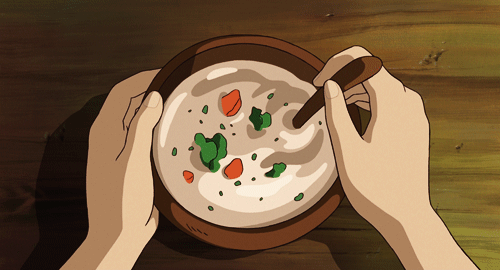
Please note: this post does NOT include all food-related lore in TWST (for example, you won’t find a lot of information about individual characters’ food preferences or personal experiences with food here). This post ONLY talks about the food culture, notable locations, cultural dishes, and unique foods of the Twisted Wonderland world at large (ie countries, specific towns and cities, etc).
I did my best to scour for info, but I’ll update if I find anything new or details I missed the first time around.
General and/or Unspecified Location
Icicle mushrooms are one of Twisted Wonderland’s three greatest delicacies. They are extremely rare and expensive.
There is a seasoning called “pure azure salt”, which is said to be rare, even in the Coral Sea.
Twisted Wonderland has a fruit called ruby berries (which taste “like freshly picked strawberries”).
There is frozen mint with a “refreshing profile” that grows in icy mountainous areas.
There exists Walrus-brand oyster sauce. Trey uses this to cook hamburger steak for his younger siblings. He says the oyster sauce provides a "nice savory flavor" with considerable depth. Trey also jokes about adding it to chestnut tarts in book 1.
There are mentions of irl Japanese foods such as konjac and takoyaki, but so far no place of origin in Twisted Wonderland has been sited.
Like in the real world, celebrities like Vil and Neige are used to promote products (including food and drink) in commercials, on social media platforms, etc. For example, in book 5, we see Neige advertising Red Apple Soda and Vil using his Magicam account to promote the apple juice made by Epel's family.
There's a popular dish called "pumpkin carriage stew". The insides of a pumpkin are scooped out and the shell is filled with a creamy stew, which made it difficult to carry over to tables. It would sell out every day at the cafe Ruggie used to work at.
Some restaurants call their spaghetti with meatballs "starry night spaghetti", named after the tale of two dogs who shared a spaghetti kiss under a starry sky. It is said that sharing spaghetti with meatballs with someone outside would lead to true love.
Hunting is sport as well as something done for food.
Crowley goes on vacation “to the South” and reports to enjoy mango and mango-flavored products from there. He also brings back manga tea as a souvenir.
Briar Valley
General
Cotton candy is a classic snack food sold at Briar Valley food stalls. The way it is prepared resembles spinning threads, which is considered a blessed occupation (as there was a period in Briar Valley's history when no one was able to spin thread, so some clever individual tinkered around and made cotton candy instead).
In the battlefield (~400 years ago, during the human-fae war), soldiers would roast rats and lizards to eat if they didn't have rations or other ingredients.
There is little in the way of modern technology and electricity; typically, one would prepare dishes and/or collect ingredients by hand (such as via fishing) or by using magic.
Magic is used to light fires for cooking. There is little risk for fire accidents since magical fires automatically go out when you go to sleep.
Because Briar Valley is located to the north, it can get very chilly. When the snow melts, it turns into very cold freshwater.
According to Lilia, “berries are a must-have, especially at birthdays parties” in Briar Valley. They are famous for its berry juice.
The forest where Silver and Lilia live has strawberries. Silver picks them with his animal companions.
Coral Sea
General
According to Jade, there are no fires in the Coral Sea. Therefore, most of the food consumed is raw.
A month-long land boot camp first established by a mermaid princess that married a human prince teaches merpeople fire safety and how to eat food as part of its curriculum.
It's rare for merfolk to eat anything sweet, as those kinds of foods aren't readily avaliable in the sea.
The Atlantica Memorial Museum has the mermaid princess's "silver hair comb" on display. This, of course, refers to the "dinglehopper"--a common fork. This implies that merpeople (such as the mermaid princess referenced in many stories) fused to be unaware of the eating utensils on land.
Azul's mother owns the "hottest restaurant" in the Coral Sea. It started off as a small place, but has since expanded to have a large staff.
Couples from the Coral Sea frequently request rainbow dessert soup with trident cookies for their weddings. To eat it, you use the trident cookie to stir the sweet sky-blue soup, which then turns the soup into seven colors of the rainbow. This is a dish that is only served for special occasions in the Coral Sea, and it is typically served warm.
Jade says that he was surprised to see that many land dwellers eat their fruit without the peel; this would imply that those from the Coral Sea typically eat their foods with the skin/peel left on, or as-is.
Playful Land Amusement Park
All food and drink are handed out for free.
They serve food in large quantities, such as tuna, entire tart cherry pies (with cinnamon, clove, and crushed nuts in the filling) and a whole peppery roasted chicken. The park encourages consuming in excess.
Other food items being offered include fried tuna fish and sparkling apple juice. The juice comes with an umbrella stuck in the opening to prevent bugs from getting in. You remove it before drinking.
They have ice-cream in many flavors! We see strawberry milk in the related event.
The park had candy and popcorn in “apple core” flavor. Supposedly, this is a taste inspired by the story of the Generous Fox giving a Puppet Boy an apple core instead of a whole apple because “the puppet wished to have a core”.
There is a “Candy Road”, a street lined with shops that have caramel lollipops, chewy candy, marshmallows, cookies, chocolate crunch, and lots of other sugary treats!
Their chocolate crunch has 12 different charms thrown in.
The third most popular souvenir are pasta snacks in the shape of the Friendly Fox and Gentle Cat. The second most popular is a tin of plain cookies in the shape of the Friendly Fox and cocoa cookies in the shape of the Gentle Cat. Finally, the most popular are apple core flavored candies!
Sage's Island
Night Raven College
Pomefiore holds a welcome party for the freshmen, which includes a fancy dinner. Savanaclaw does not hold a welcome party.
Scarabia regularly holds banquets, typically at Kalim's request.
Heartslabyul holds "unbirthday parties" whenever it is a day that does NOT fall on a Heartslabyul student's birthday. Sweets are mandatory at unbirthday parties.
The dorm members of Scarabia and Heartslabyul pitch in to prepare for banquets and unbirthday parties.
Mr. S's Mystery Shop stocks food items, such as candies (which Floyd often buys), tuna cans, and ingredients for baking (this is where Deuce and Yuu pick up things for the chestnut tart in book 1). Sam also sells food items that he seems to have made himself, like the Mystery Drink (which Octavinelle eventually buys the rights to).
The school cafeteria is said to have delicious breads.
Once a month, a famous bakery from out of town serves their goods at NRC. Their stock includes items such as chocolate croissants, egg sandwiches, yakisoba bread and cream bread ("cronuts and bear claws"), roast beef sandwiches, red bean buns ("hot dog buns"), and deluxe minced cutlet sandwiches ("deluxe ham and cheese"/"grilled cheese" in the localization). They sell out fast!
The cafeteria at NRC serves food buffet style; the cafeteria is kept warm with magic from fire fairies which are supplied with dry firewood every day. There is also a rotating daily menu.
Master Chef ("Culinary Crucible") is an elective course at NRC that teaches students how to cook. It is meant to curb the expenses related to eating out and to help the boys maintain balanced diets and learn how to take care of themselves. Judges for this course are randomly selected from the students and staff (prior to this methodology, people would bribe the judges for extra credit).
While taking Master Chef, students help with preparing meals in the cafeteria in exchange for part-time pay.
The instructors for Master Chef are ghosts who were professional chefs at five-star restaurants when they were alive. These same ghosts also serve as cafeterias staff. Crowley says it was difficult but worthwhile to recruit them.
There are various locations on campus where the students go to fetch ingredients for Master Chef. This includes an on-campus farm, ranch, windmill... and even the dormitories themselves!
The woods behind the campus have chestnuts, which the main crew collect for an apology tart to Riddle.
The Botanical Garden has some edible plants growing there. These include strawberries, which the Science Club cultivates.
NRC opens its school gates to the local townspeople for a period leading up to Halloween; during this time, they distribute candy and other sweets (such as Sam's waffles, served with jam made from NRC's apples) to guests. There's also a party on Halloween night where lots of food is served.
Mostro Lounge
Octainvelle has the Mostro Lounge, described by Jade as "a meeting place for gentlemen" where fighting between dorms is prohibited. While dining there, students are expected to abide by Octavinelle's rules. It is run by the manager and founder, Azul, who made a deal with the headmaster to get the rights to open the establishment. NRC gets 10% of the revenue the Mostro Lounge makes.
Jade and Floyd partake in some cooking, but Azul does very little cooking. He tends to investigate the competition and market.
Jade uses the weeds and plants he collects from mountain hikes to brew experimental new teas. Sometimes Azul adds these drinks to the menu.
Floyd likes to experiment with making sauces. These, too, are featured in the lounge.
The lounge offers cakes with coral decorations. You can order one for your special occasions.
The Mostro Lounge is particular about its quality name-brand dishware. Azul believes that this will boost the experience customers have in the lounge.
The Octatrio bought the rights to the Mystery Drink from Sam and raised its price from 600 madol/6 thaumarks to 1500 madol/15 thaumarks.
The Mostro Lounge has a one-drink purchase minimum.
Menu items range from roughly 600 madol to 1500 madol (6 thaumarks to 15 thaumarks). The menu rotates on a seasonal basis; this helps to cut down on costs since they can focus on cheaper in-season ingredients.
The Mostro Lounge also operates food stalls and/or sells food at many school events, such as the cultural festival in book 5 and the interdorm magical shift/spelldrive tournament in book 2.
It is mostly Octavinelle students who staff the Mostro Lounge, but there are occasions when outside students are brought in as extra help. Ruggie has worked there part-time, as well as Jack, Ace, Deuce, and tons of other students.
Unbirthday Party Rules (related to food)
Rule 25: There must be a tea party on the 5th of every month.
Rule 29: You must not eat the Queen's tarts without her permission.
Rule 153: The only tea you may drink in the evenings is herbal tea.
Rule 186: Do not eat hamburger steak on Tuesdays.
Rule 256: You must not drink lemonade with honey past 8 pm.
Rule 271: You must get up from the table within 15 minutes after eating lunch.
Rule 339: Your post-meal tea must be lemon tea with 2 sugar cubes.
Rule 529: If you eat steak on the night of a full moon, a cat must play the violin afterwards.
Rule 562: Do not bring chestnut tarts to an unbirthday party.
Rule 648: You must brush your teeth 2 times on nights when you eat turkey.
Rule 703: Whoever comes in 2nd place in a croquet match must serve tea to the Queen (dorm leader) the next day.
If the dormouse wakes up at an unbirthday party, you are to paint its nose with jam.
Coffee is forbidden; tea must be served at all occasions except for birthdays.
According to Cater, sweets are mandatory at unbirthday parties.
Dwarves' Mine & Silent Woods
There is an abundance of wildlife in these areas; Jade often goes hiking and foraging, making note of what he finds. He uses the plants to make his own tea blends (which are sometimes added to the Mostro Lounge's menu) and the herbs, plants, and mushrooms to experiment with in cooking.
There are fish to be found at the lake, including massive catfish.
The Foothill Town
There is a port for mainly cargo ships located at the southwest part of town. It's called Crane Port! The east side has a port as well, but that one is moreso for passengers. Crane Port has been getting fewer and fewer people passing through lately (until Port Breeze Fest, in which the NRC boys run food stalls and help to revive business in the area). Group A makes churros, Group B makes waffles, Group C makes salads, Group D makes cotton candy, and Group E makes clam chowder.
A popular restaurant in the Crane Port area serves foods like french fries and burgers. Their signature menu item is a donut made from potatoes. Actually, this restaurant specializes in potato dishes!
There is a chain restaurant on the island that also has locations elsewhere, including in Ace's hometown. He mentions that there are slightly different flavors to the sauces depending on which location you go to. This chain is also described as affordable for students and gives free refills. There is a location of this chain a car ride away from Harveston.
The town also has other eateries that are more geared towards students, seeing as it exists on an island with two notable magic schools to the north and the south. Cater often mentions going into town to take pictures at cafes.
There is a famous patisserie there. You have to line up early in the morning before opening time to get your hands on one of their strawberry tarts (or anything, really!).
Scalding Sands
General
The Scalding Sands seems to borrow heavily from Middle Eastern cultures. For example, some of the Scalding Sands’ traditional dishes include, but are not limited to: roasted lamb, moussaka, döner kebabs, shawarma, flatbreads, potato and bean spreads, and seafood sautés.
Tea is a popular beverage; it is had at every meal and break. People can drink up to 10 cups of tea a day!
The Scalding Sands specializes in black tea. For entertaining guests, special tea leaves are used.
In the Scalding Sands, they brew their tea leaves loose and without an infuser. This makes the tea very strong and bitter. To counteract the powerful flavor, people add lots of sugar to their tea and drink it with sweets.
“Luxurious” tea is very sweet, since sugar was once very expensive (due to a shortage of it, according to the localization) and considered a luxury.
Due to the hot weather, people often toss herbs into their tea to make it more refreshing to drink.
Coffee is also popular; there are many cafes that serve coffee and tea. The Scalding Sands is known in particular for their spiced coffee, which has a very distinctive flavor. This coffee is brewed without a filter, and some cafes do “coffee divinations” (reading the shapes and patterns of the grounds and the water droplets that remain after drinking to tell the fortunes of customers).
There are a lot of unique spices in their dishes. This is especially true of banquet dishes. However, a variety of dishes are still served at these occasions.
Kalim describes the Scalding Sands as being “big on stewed stuff” like curries.
In Kalim’s hometown, people love to gather around the table and talk over a meal.
Halloween in the Scalding Sands is celebrated by feasting on a variety of dishes. The idea is that the food must be abundant so that the ghosts that return to the world of the living for the night may also have their fill.
It used to be difficult for the people of the Scalding Sands to obtain water due to the lack of rainfall, hot climate, and expansive desserts. However, Kalim’s ancestors utilized the country’s rivers to reach other countries and to trade their textiles, spices, tea leaves, and other local goods with foreign lands. It was particularly impressive at the time, as they were the first traders from the Scalding Sands to sail (back then, accurate nautical maps were not a thing). This maritime pioneering is what would make the Asim family their massive fortune.
The Asims and other merchants heavily invested in technologies and innovations to make the area more sustainable and potable water more accessible.
The waterways of the country eventually developed into canals and communities formed around them as trade hubs. The canals are also used to host ferryboats for locals and tourists to sightsee, boosting the tourism industry. This also made access to water much easier for the residents, and the water helps to cool the temperature.
Silk City
The bazaars in Silk City are where locals do their shopping for various goods and staple foods like vegetables and fish. There are also stalls with gourmet food that cater to tourists.
Camel Bazaar is named after camels, which were used to transport people, goods, and luggage before Silk City’s canals and roads came to be. There also used to be an oasis where the camels would rest and drink after long treks; this oasis became a center for commerce and eventually evolved into a marketplace. To this day, the name “Camel” has stuck, even if people use trucks, ships, and cars more than camels.
There is also Zahab (”Gold”) Market, which is popular with tourists for shopping (especially for souvenirs!) but also has swindlers and pickpockets mixed in with regular customers.
Many snacks are sold! There’s camel milk chocolate, cookies drizzled in syrup, sunflower seeds, pistachios, chickpeas, all kinds of nuts, dried fruits (including dates), jams, jellies, syrups, starfruit, dragonfruit, etc.
(Lamb) shawarma is described as meat roasted on a spit and served on baguettes or pita bread. Because grease drips off while it cooks, it is “surprisingly healthier” than one expects it to be. Shawarma is also customarily served with vegetables (tomatoes, onions, olives, jalapenos, etc.) and sauces (yogurt, garlic, chili, hummus (a paste of garlic and chickpeas), mayo basil, etc).
There is a vendor that can supply large quantities of sweet and refreshing coconut water; this is because they’re used to providing for Kalim’s extravagant and excessive tastes. They create a hole in the top and provide straws to poke in and use to drink the water. The coconut flesh inside is also edible.
There are a lot of bread stalls; bread is also another staple food, and it comes in many sizes, shapes, and textures. Small roadside bakeries have wood-fired ovens which allow them to serve bread fresh to customers.
One stand sells baguettes that are taller than many children; these “tower baguettes” are a famous Fireworks Festival treat. People say that if you eat a big one, you’ll never go hungry again! The saying comes from a story of a young man that shared bread with hungry children. It’s because of that story that baguettes are considered a good luck food that many vendors sell on holidays.
The Camel Bazaar sells an elastic ice-cream (based on a similar irl frozen Turkish confection). It is kneaded on a pole and stretched out; customers are meant to “catch” it in their cups and cones. It’s food performance art! All the stretching makes the texture very unique.
There’s a fruit stand that is only open on festival days which sells a Silk Melon sundae; the fruit is hollowed out to host ice-cream (of the same melon flavor!) and toppings which make it very photogenic.
Starfruit is usually put in salads, according to Trey.
The dragonfruit sold is recommended to be eaten with honey. You drizzle it on top of a slice and eat!
Silk City’s signature fruit is the Silk Melon. It is called that because of its silky texture and sophisticated sweetness. It can’t be found in many other countries. The man of legend that shared his bread with a starving child is said to split a melon with his friend, even though he did not have much money to spare. It’s because of this tale that people started saying if you share Silk Melon with someone, it would make your friendship or romance last forever. Now the fruit is a festival staple and considered a symbol of good fortune.
In the past, water was only used for irrigation due to its scarcity. Some gave up on farming after years of trying to produce crops and failing—but others refused to give up and cultivated the land to made it fertile, something which future generations would reap the benefits of.
The fruits and veggies sold Camel Bazaar are freshly picked and grown locally. Jamil says this is possible because the arid climate actually helps with growing crops of high quality. Produce raised with less water concentrates flavor since the final fruit will have a higher sugar content. Because of this, Silk City’s produce is prized by chefs all over Twisted Wonderland. Of course, you can get them at an affordable prize in Camel Bazaar!
Shaftlands
General
The Shaftlands are famous for its jeweled pineapples.
The Shaftlands spans a large area of land and has drastically different climates depending on the part of it you're looking at. Therefore, we can deduce that foods and customs surrounding food are very different as well.
City of Flowers/Fleur City
The city’s food culture seems to be inspired by real world Paris, or at the very least, France.
Bread is a local specialty, particularly very buttery kinds. As you walk down the streets, you can smell bread baking. The City of Flowers has 10x (or more) the variety of bread that Sage's Island offers, and has an abundance of bakeries too.
Bread-making is popular in the City of Flowers. The windmills at the edges of the city grind grains to produce fresh flour. There are also watermills powered by the Soleil River to assist with making flour.
Because wheat is plentiful in this area, some of it is also used for desserts. One such confection is financier, which is made from a combination of wheat flour, almond flour, and butter. It resembles a gold bar, so eating one is said to bring financial prosperity.
Lately, gluten-free desserts have been trendy.
A dessert that does not use wheat flour is macarons. In the City of Flowers, they are yellow and shaped like bells to honor the Bell of Salvation which oversees the community and provides magic that helps rare plants grow in the area. The filling is a ganache with dried bits of grapes and apples.
Grape juice is popular in the City of Flowers, as the fruit is another specialty. You can buy the grapes raw and eat them as is, or ask a vendor to crush it (skin still on!) into juice for you. Some buy the grapes to give as gifts!
The grapes are grown in vineyards right outside of the city, and the farmers are constantly experimenting to improve their breeds. They taste very rich, tangy, and sweet.
The City of Flowers is also known for its many specialty cheese shops. Together, bread and cheese are called the staple foods of the city, and are sometimes eaten together. One specialty cheese shop the boys visit sells baguettes topped with ham and rich melted cheese.
The city considers goats a symbol of good luck, so they are treated with care. There are many community goats (which are just as common as domesticated cats or dogs) allowed to roam freely in the city. It is said that if you treat the community goats with kindness, they will come rescue you in your time of need.
Goat milk is used in some of the specialty cheeses produced by the city. The grapes mentioned earlier are also made into fruit compotes to go with the cheeses.
Harveston
This village has many dishes that borrow from a mixture of irl Nordic cultures. There’s also an emphasis on having hometown pride and the community itself being very close.
Crows often damage the apples Harveston grows. The community comes together to put up nets and make noises to scare them off.
As expected, many of Harveston's dishes feature apples: apple pie, grilled and roasted apples, apple salad, apple pound cakes, etc.
Epel's family has an apple orchard that has been in the family for generations. They grow different kinds of apples throughout the year. Many of his neighbors are older people who also raise produce, and they help each other out when they're short on hands. The community is very tightly knit because of this, and treat each other like extended family.
Harvest season (autumn) is the busiest time of year; once that's over, everyone comes together to have a party. It's a potluck style celebration where everyone brings a homemade dish or homegrown food to share.
Harveston preserves its produce (such as apples and wild greens) by pickling them and serving them in salads. The bright colors are maintained by boiling the produce in a copper pot, which stabilizes the pigments. It's wisdom passed down from generation to generation.
There is also pickled herring, traditionally eaten on bread. Brining preserves the fish while it is still raw and doesn't dry it up. It's ready to eat right out of a jar, no cooking required.
The local stew is not very thick. It tastes sweet because of the added vegetables and savory because of the tender meat in it. There is also a salmon broth sprinkled with herbs which is described as "melty".
Fruits and vegetables can be packed in snow to keep them preserved. This method is called “snow aging” and prevents evaporation. In the old days, the villagers would build whole farms out of snow. In modern day, they just shovel the snow into a barn. This creates a natural fridge that will naturally thaw in the summers. Snow aging in this manner makes the produce sweeter and more nutritious.
The next town over is a three-hour bike ride. The roadside has many apple trees you can enjoy during the trip.
You can easily pick apples off the branch and eat them fresh! Farmers can snack on apples while picking.
Harveston is surrounded by tall mountains that are snow-capped all year, the most famous one being Mt. Moln. The greenery around Harveston is due to the spring water irrigation which runs down from Mt. Moln.
Most of Harveston’s land is used for orchards, and apples are their main produce. They also make many products using those apples like chips, rice crackers, and cookies.
Fall apples are sweeter, while winter ones are more sour. Winter apples are unique to Harveston.
Harveston also grows a lot of garlic.
Harveston farming is done the old fashioned way, as the predominantly older population distrusts chemical fertilizers and biotechnology.
Some villagers like the mayor and Marja (Epel’s grandma) adjust their accent to communicate with people from outside the village. Marja says she switches up when she’s selling goods in another town, since it can be tricky for non-Harveston locals to understand.
Hand washing before eating is a must! They take the act very seriously in Harveston. Stories say the miners of the past used to get very sick due to poor hygiene, but their health improved drastically once they started washing regularly with soap and water. It was difficult for them to get treatment because the town is so remote and far from hospitals or doctors, so the best thing is stressing prevention. This why the townspeople are sticklers about hand washing now.
To wash the Harveston way, you plunge your hands into ice cold water and make it all foamy with soap. You also scoop the water up and splash your face as well (as the miners from the past would also do this).
Apple Square is the main festival venue; it has many vendor stalls in an area called Kokko (which means “Bonfire”) Market. The Sledathon is the most lucrative time of year for the townsfolk.
Many of their products are made locally by the older folks in town. The goods aren’t trendy or very fancy, but they’re high-quality and made with Harveston pride.
The stalls give apple juice, apple tea (which has fruit pieces floating in it), and apple ginger tea for free. The apple juice is one of Harveston’s most popular products.
Giant five-meter apple pies are made for the Sledathon. They’re considered one of the main attractions, and you can get a slice from them free of charge.
There are other stalls that sell regular apple pie too. Every vendor has their own style, from the apples used to the crust and baking technique.
There are other kinds of fruit pies for sale, but apples are the most popular and “special” ones. The Beautiful Queen had a preference for apple pies, so the townspeople do too.
Harveston apple pies have such an entrancing flavor that the nearest city has stores that stock them. Critics say that Harveston apple pies make anyone drool and that the best way to convince someone to do you a favor is to gift one.
Harveston holds an apple competition to find the reddest apple. This is because the Beautiful Queen prized beautifully red apples. In the past, the townspeople would offer the reddest apple from the season’s harvest to the Beautiful Queen. Over time, it evolved into the apple competition.
Kokko Market makes pancake balls from a flour batter and top it with jam. It’s prepared in a pan and with methods similar to takoyaki, coming out crispy on the outside and fluffy on the inside.
Pancakes also come in a square form. In Harveston, pancakes are baked in the oven instead of on the stove. Some people cook pancakes in the fireplace too; this makes them tender, thick, and pudding-like.
There are many grains used for bread: sunflower seeds, pumpkin seeds, oats, flax seeds, sesame seeds, rye, wheat...
Barbeque is served for large gatherings and celebrations.
Cooking tends to be done in the fireplace instead of on a stove, especially in the case for stews. It keeps the room warm in winter while the food cooks.
Harveston has a bean and fruit soup. Most other places serve it cold, but those in Harveston sometimes enjoy it warm. It’s a thick consistency and the fruit in it has been dried.
When setting the dining table, people in Harveston leave one extra plate out. This tradition comes from a story about a traveler visiting a family’s house and being surprised by the messy state of it. The traveler cleaned the house and cooked a nice meal for the family. From this story came the belief that as long as you leave a plate at your table, you’ll never want for food or go hungry.
Sandwich cakes are common party centerpieces. They are made with bread and vegetables, topped with shrimp, deviled eggs, olives, apples, and salmon slides arranged in a rose shape. The frosting on it is made from mayonnaise and sour cream, making sandwich cakes more salad than dessert.
They sell cherries and other berries by volume. Also sold are vegetables and juice, freshly squeezed.
Because Harveston is located in a mountainous region, there are rare varieties of mushrooms to be found. These can be served in a traditional mushroom soup, which can be finicky to prepare (so usually only experts make it). Mushrooms are also cooked in butter and served in sandwiches.
Mushrooms, herbs, and flowers are foraged from the nature (both public mountains and private woods). Locals usually don’t buy plants that are wild when they can pick it themselves. Instead, they’re sold to tourists.
Good foraging spots on Moln Mountain are kept secret so people don’t overharvest. The mountains are dangerous in winter, so foraging has to be done in spring or summer.
Harveston brines raw fish like salmon in a mixture of salt, sugar, pepper, and fill. In the old days, brined salmon was buried in sand to let it ferment.
Fish is dried to preserve it and to enhance the flavor. Before there were proper roads, it was hard to bring in food for the winter, so Harveston relied on foods preserved in the spring. They last for a long time and have many uses (such as in soup stock or to eat straight up). To this day, preserved meats and vegetables are a local specialty and new methods such as roasting have been developed for preservation.
Sunset Savanna
General
The food here appears to be inspired by African cultures of the real world.
There is floral cacao in the Sunset Savanna. It bears fruit only once every 10 years.
Gummy bugs are popular and a Halloween staple.
The people of the Sunset Savanna value living in harmony with nature and will go out of their way to adapt to the land (due to the high population of beastmen, who have animal ancestors). Because of this, they oppose change that could damage the environment. There are some parts of this arid country that still rely on wells for their drinking water needs. They also hold the Tamashina-Mina festival every year to pray for rain.
Sautéed mutton is a common meal in this country. Leona brags that the Sunset Savanna is top notch when it comes to cooking meats.
The bananas of the Sunset Savanna are starchy and resemble potatoes (similar to plantains). They are steamed and served as a staple food. They’re faintly sweet and are actually very light and easy to digest.
It’s easier to grow fruit instead of wheat and rice in their climate.
Rice crepes, another staple, are served with a stew that you pour over it. The stew comes in variants such as a white fish stew simmered in tomato sauce, spinach and potato stew, beef stew, etc. There are also many side dishes you can enjoy with the crepes. The crepes aren’t meant to be eaten alone, as they taste too sour solo.
The phrase “that’s the Circle of Life” is a proverb that has been around for ages. The strong eat the weak, then when the strong die, their bodies become nutrients for the grass which feeds the next generation of prey animals. Life comes “full circle”, and the proverb indicates this delicate balance.
The Sunset Savanna is famous for its coffee. It tastes spicy, not bitter, because the custom is to add spices to the drink.
Food prep performances seem to be common for the wealthy; Leona mentions seeing big fish filleted before being served.
Yogurt is considered a “healthy dairy” and is typically served for breakfast.
Elephant Graveyard
The Elephant Graveyard, once considered a scary and lawless place (the “shadow lands” which were not a part of the original kingdom), has become a tourist destination.
They are known for selling vanilla cookies shaped like bones.
The hot springs at the Elephant Graveyard have kettles hidden by the steam. The hot water vapor cooks onsen tamago (a traditionally Japanese irl dish) and puddings. It imparts a slightly salty and sulfurous flavor and smell to the foods.
Sunrise City
The Raintree Market is a bazaar that features many foods and drinks.
Many snacks sold in the marketplaces are local specialties, so they’re popular as souvenirs.
Wild and cultivated hibiscus flowers are boiled with sugar to produce a red juice. There is also a white juice, which is made using wild baobab (which is full of nutrients; people call it a beauty elixir you can drink). A legends says that, long ago, members of the royal family would have their foreheads painted with baobab juice when they were born. That’s how the fruit became a local specialty.
In the original tale, the juice for marking foreheads was red. It seems that, over time, the color was changed to white by word of mouth, with the latter description fitting more with the white fruit of the baobab. Because of this change, more and more stalls have been selling a mixture of hibiscus juice and baobab juice.
The baobab fruit is also used to make a particular sour candy. The candy is dyed with res food coloring and is then dusted with sugar and chili powder. It’s described as having a “mature” flavor.
Mangoes are a local specialty! Vendors will happily cut open the fruit for you to enjoy on the spot.
Other notable fruits for sale are tart passionfruit and creamy but smelly jackfruit. The latter is considered the largest fruit in Twisted Wonderland and grows on its tree’s trunks.
The Sunset Villa is a luxurious hotel that hosts VIPs and important guests of the state. They offer a large selection of drinks (fruit juice, black tea, coffee…) and serve whole slabs of steak in front of you before serving at luxurious barbecues. After dinners, they have dance performances.
There is an enormous sausage that’s wrapped up in a coil. If unwound, it’s a meter long. It’s meant to be cut with scissors before eating. The sausage’s herbs make it taste refreshing, and its meat is finely grounded to allow its flavors to come through.
Seafood is fresh and cheap, provided you live by the sea or in a coastal region like Dawn City. In more inland areas, seafood is considered a luxury.
Their seafood tends to be cooked with strong spices.
Ruggie’s yet-to-be-named hometown
Because the residents are poor, their food is usually made from collected scraps (such as pumpkin pie made predominantly from the pulpy parts) or prepared with substitutions and without extra flourishes. For example, Ruggie’s grandma prepares homemade donuts for his birthday but they couldn't afford fancy toppings (until Ruggie started working to bring in extra income).
It’s implied that there were instances when Ruggie (and presumably others from his hometown) had to eat rotten food or out of trash cans to get by.
Queendom of Roses
General
There is reference to some irl UK foods in this region, such as the jacket potato.
The Queendom of Roses is famous for its rose jelly rolls. Roses are the flower the country is best known for, of course, but they also have lavender, rosemary, sweet violet, foxglove, bluebells, and many berries.
People from this country eat flowers (which are specifically grown for eating). Flowers are also used for dried flower bookmarks? potpourri, etc.
The Queendom has a good selection of breads.
Apparently, the Queendom also has a strong “tea culture”.
People in the Queendom of Roses eat a lot of different pastries (pies, tarts, quiches, croissants, etc). Croissant donuts (cronuts) in particular have been pretty trendy lately. They’re donuts made with croissant batter, so they come out super flaky. They are sometimes sold with iced tea as a combo.
Potatoes are a staple food.
Jacket potatoes are common at festivals; they are potatoes baked with the skin (ie “jacket”) still on. The standard topping for them is baked beans, but you can also have tuna mayo corn, bean chili, sour cream, avocado, and other things.
Anyone that grew up in the Queendom of Roses has probably done the “cookie smash” at least once as a kid. (More info on this under the “Clock Town” section!)
The Queendom is known for lavender, berries, and rosemary.
Riddle and Trey's yet-to-be-named hometown
Trey's family owns a bakery (called "Patisserie Clover" according to the TWST manga). It seems to be a small "mom and pops" shop with no particular notoriety. However, the manga implies that it was the Clover bakery where Riddle saw the strawberry tarts and became entranced by them. This is also where Riddle would later try his first strawberry tart.
In Riddle and Trey's hometown, people enjoy apple bobbing during the Halloween season.
Before interview: Riddle was worried whether they can start on time and was relieved when Vil showed up and Vil was pretty smug about it lmao
There is a farm not too far from where Riddle lives; it is famous for its ice-cream buns. There is also a cafe located on the farm! It opened shortly after Riddle entered NRC and is so popular that it’s spoken about in magazines and tourists go there just to sample their sweets.
Clock Town
The people of Clock Town value time and punctuality due to the town's connection to the White Rabbit, who was always in a hurry. Many of the foods sold at stalls are things that are easy to hold and eat while walking, such as sliced sandwiches.
The Clock Town Folk Museum mentions a girl that appears in the story of the White Rabbit. She ate cookies that made her grow large; the museum recreates this experiment by projecting a large image of guests that eat cookies they have set out.
The Clock Town Folk Museum also runs a bugle-playing contest. The participation prize is a carrot cookie.
Clock Town sells a brand of potato chips with the White Rabbit logo on them.
The town also sells cookies iced to look like a pocket watch. The icing is made from a mixture of sugar and egg whites (“royal icing”) which hardens considerably. You’re meant to crush the cookie with a hammer to make it into smaller pieces, making it easier to eat. It’s based on the story of the White Rabbit breaking his pocket watch. Others tried to help him fix it by hitting it with a hammer, but it didn’t help at all, only damaged it more!
A lot of people enjoy growing plants, gardening, and horticulture, including stuff that can be eaten like herbs.
Sausage rolls are served in pairs to resemble bunny ears; the container they come in resembles the White Rabbit. They’re sausages wrapped in a pie crust/puff pastry dough, and come in cheese (with a shortcrust pastry similar to what is used for tarts to help hold its shape) and a spicy sausage (with a puff pastry that makes it flaky) variant for the White Rabbit Festival.
There are large mushrooms that grow in Clock Town; eating one side will turn you large, eating the other side will turn you small. The girl in the story of the White Rabbit has eaten these strange mushrooms before. These mushrooms are said to be enchanted and only work in a particular area; its effects last for ~1 minute after eating.
#twst#twisted wonderland#twst resource#twisted wonderland resource#disney twisted wonderland#notes from the writing raven#Neige Leblanche#Pomefiore#Yuu#Sam#Mr. S#Dire Crowley#Heartslabyul#Octavinelle#Rollo Flamme#Savanaclaw#Scarabia#Ignihyde#Diasomnia#Rollo Flamm#Grim#Mister S
2K notes
·
View notes
Text



A Shoo-in Shoebill Stork
The shoebill stork, also known as the whalebill stork or Balaeniceps rex is in fact not a stork at all, but a long-legged wading bird belonging to the family Pelecaniformes. This species can be found in the central African tropics, from southern Sudan to northern Tanzania. Within this range, they mainly inhabit freshwater swamps and dense marshes, particularly those with deep water large reed beds.
Balaeniceps rex is often referred to as a dinosaur among birds due to its fearsome appearance. The average individual stands 1.1-1.4 m (3.6-4.5 ft) tall and has a wingspan of 2.3 to 2.6 m (7.5 to 8.5 in). However, adults are quite light, weighing only 4 to 7 kg (8.8 to 15.4 lb). Males tend to be larger than females, but otherwise the two sexes look identical. Adults have dark grey plumage with a lighter belly and darker wings. Their most striking feature is their beak, which is extremely large and can be said to resemble a wooden show (hence the name).
The shoebill's beak is very useful for catching its primary prey: fish. B. rex consumes a variety of species, including lungfish, catfish, and tilapia, as well as non-fish items like water snakes, frogs, turtles, mollusks, and even young crocodiles. Shoebills typically stalk their prey, or stand perfectly still and wait for their prey to come to them, before quickly snatching it up and decapitating it with the sharp edges of their beaks. Because of their large size and strong bills, adults are seldom prey for other animals, and they defend their nests fiercely from predators like snakes and other birds.
Outside of the breeding season-- and even during it-- shoebills are extremely territorial. Not only do they chase potential predators away from their nests, both males and females will fiercely defend their territory from other shoebills.
Breeding begins in the dry season, typically in in May, and lasts until about October. Once a male and female form a pair, they remain together for the duration of the mating season. They build a nest from floating vegetation, and 1-3 eggs are cared for by both parents; in addition to being incubated for warmth, one parent may also occasionally pour a beak-full of water over the eggs to keep them cool during the hot summer day. The eggs hatch about 30 days after being laid, and young are fed continuously-- though usually only one chick survives to adulthood. At 125 days old they become fully independent and leave to establish their own territories. The average individual can live up to 35 years in the wild.
Conservation status: The IUCN lists the whalebill stork as Vulnerable. Current wild population estimates sit at about 5,000-8,000 individuals. Primary threats include poaching for the zoo trade and consumption, habitat destruction, and pollution.
If you like what I do, consider leaving a tip or buying me a kofi!
Photos
Santiago Caballero Carrera
George Amato
Mana Meadows
#shoebill stork#Pelecaniformes#Balaenicipitidae#wading birds#birds#wetlands#wetland birds#freshwater fauna#freshwater birds#africa#central africa#animal facts#biology#zoology#ecology
164 notes
·
View notes
Text

For May 2024, The Prompt Foundry is sticking with the classics and doing MerMay!
Hope everyone's excited to dive in!
If you use this list, please tag me here @thepromptfoundry, I’d love to see your writing and art!
Feel free to combine different days' prompts with each other, or combine them with other seasonal events! Use your OCs, your favorite characters from media, whatever tickles your fancy.
Respond to as many prompts as you want or as interest you, don’t worry about missing or skipping any. Remember, this is supposed to be fun!
If you have any questions or musings, check our FAQ, and if you don't find your answer, shoot me an ask.
Plain text list below the cut:
1 Merfolk Royalty
2 Seafloor Cities
3 Merfolk and Sailors
4 Sinking Ships
5 Sirens
6 Fishnets
7 Deep Sea Mer
8 Undersea Agriculture
9 Seahorse Mer
10 High Tide
11 Underwater Communication
12 Merbabies
13 Sand Dollars
14 Drowning
15 Whale Mer
16 Storms at Sea
17 Shark Teeth
18 Tsunami
19 Octopus Mer
20 Mer Marriage
21 Evolutionarily Plausible Mer
22 Lost at Sea
23 The Mariana Trench
24 Selkies
25 Mer Schooling
26 Seashells
27 Merfolk Folklore
28 Freshwater Mer
29 Sunbathing
30 Watery Warfare
31 Land and Sea
#the prompt foundry#mermay#mermay 2024#mermaid#merfolk#art prompt#art challenge#writing prompt#writing challenge
122 notes
·
View notes
Text
I've played roughly an hour of endless ocean luminous now and I have to say while I enjoy it so far the comparisons to the other games are inevitable and I have a few niggling issues I want to share because I really wanted this to be great.
1) the focus on multiplayer. No thanks. I'm sure people will use and enjoy this but endless ocean was always a solo experience for me, the atmosphere is ruined with 20 pricks milling around doing fortnite dances
2) the mishmash of aquatic life. They've mashed together the first game (one reigon focus) and second game (multiple separate maps with different animals altogether) and I don't think it works. You get fully freshwater fish hanging out on a coral reef with all the surgeonfish and it just takes me out of it. I'm fine with tropical marine life from coastal Indo-Pacific mixing with marine life from the mid Atlantic to not restrict the choice here (not that pedantic) but when we previously had a fully realised section of the Amazon river with mangroves, awesome ruins, and god awful muddy visibility just randomly coming across pirahna in a cave next to a dolphin is disappointingly lazy and breaks the immersion. You can find over 500 marine species guys you don't need to throw freshwater in for seasoning.
3) The randomised maps are broken, quite bland, and ruin the 'special' feeling of the rare encounters. I was thrilled to come across Thanatos from endless ocean 2 who terrified me as a kid (and had his own awesome entrance music) but then in another part of the map I found him again. And then again. No joke, I found Thanatos 4 separate times in the same map.
4) I miss the general haunting atmosphere of the first two games (mainly the first). The operatic score, the cursed statues, the trenches.
5) also miss hanging out on the boat/island
Not nearly finished the game yet but yeah a few disappintments for me so far. Interested to see what other fans think.
23 notes
·
View notes
Text
California's largest reservoir is expected to reach its maximum capacity this year, to likely reach a full or nearly full level for the second consecutive time following several years of historically low water levels.
Lake Shasta rose 12 feet from March 1-26 and needs another 17 feet to reach its limit, the Redding Record Searchlight reported.
"We're expecting it to creep right up to the top," said Don Bader, area manager for the U.S. Bureau of Reclamation, per the news outlet.
As of March 27, the lake was 90% full and 115% of the average for this time of year. However, Bader noted the difficulty for it to completely fill since the lake is narrow at the bottom and gets wider at the top.
In March, the bureau began limiting the water released from the Shasta Dam to allow the lake to fill, per the Record Searchlight. On March 13, it was releasing 14,000 cubic feet per second — equivalent to 377 million gallons an hour. It had reduced the release rate to 3,569 cubic feet per second two weeks later, as more than three times that amount flowed into the lake.
"The rain right now is perfect for us to just top it off by the end of April," Bader told the newspaper.
The lake is one of the state's most crucial freshwater sources, sending water as far south as Bakersfield for drinking, agricultural irrigation, and wildlife habitat through the Central Valley Water Project.
According to a previous Record Searchlight report, Lake Shasta was 24% full and 175 feet from the top of the dam in late 2021. However, atmospheric rivers have inundated the region, reviving several bodies of water like Lake Shasta and Lake Tulare.
The full Lake Shasta will benefit the entire state, but the local economy will also likely see its most profitable summer season since before the COVID-19 pandemic.
"We're feeling very good. We had a great lake last year, a full lake level, and it was fantastic. Not only just cabin tours, our dinner cruises were record-breaking. This year, we're expecting the same but on an even better, positive note," Matt Doyle, general manager of Lake Shasta Caverns, said.
"This is going to be finally the year where it seems COVID is almost a distant memory. The employees are coming back, lake levels are up, and businesses is looking good."
13 notes
·
View notes
Text
My current theory: We are going to get 4/5 seasons of Prehistoric Planet. Each season involving a certain element at its theme.
Season 1 was based around Water. Coasts, Deserts (lack of water), Freshwater, Ice Worlds, and Forests. Forests may seem out of place, but this episode still did have a lot of relation back to water, such as the cave carved by the river, storms, and sea spray.
Season 2 focuses on Earth. Islands, Badlands, Swamps, Oceans (lack of earth) and North America.
So, if we continue on down that idea, then Season 3's focus will be on Fire. Things like dinosaurs that live in/tolerate extreme temperatures, their relation to the Sun, how heat affects them or the lack of it. Dinosaurs that have weird adaptations to deal with heat (sails!!!)
Season 4 will be Air. Not just flying creatures but high winds, places with little to no oxygen, tornadoes, high altitudes, mountains. The way theropods adapted into modern birds. Microraptor or Archeopteryx!
If there is a Season 5, I think its focus would be on Void. Nocturnal creatures, shadows, stalking, stealth, camouflage, pack hunting, caves.
If my theory is correct and I so do hope it is because I desperately want 5 seasons of this show, then I will be so happy.
51 notes
·
View notes
Text








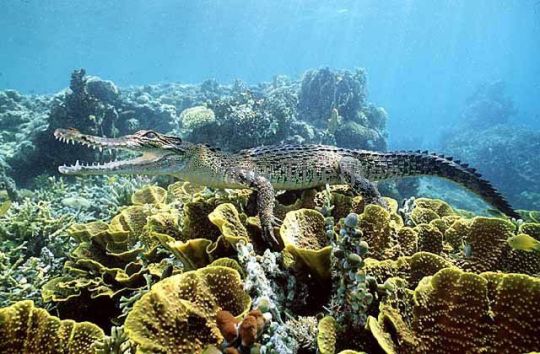
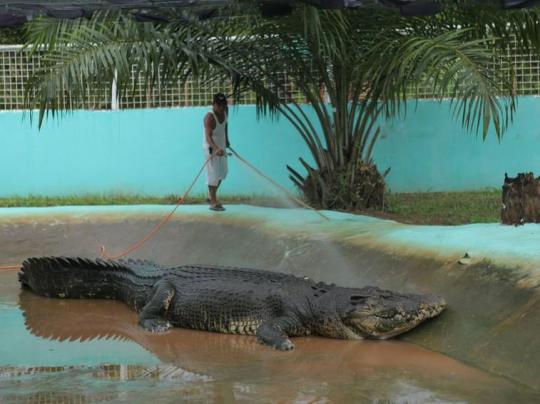
The saltwater crocodile (Crocodylus porosus) also known as the estuarine crocodile, Indo-Pacific crocodile, marine crocodile, sea crocodile, or saltie, is a large species of crocodilian which has a wide range being found throughout India, Southeast Asia, Australia, and Micronesia. Here they inhabit coastal lagoons, wetlands, deltas, estuaries, mangrove swamps, rivers, and freshwater lakes. These moderately social yet extremely aggressive crocodilians feed on a wide variety of prey including invertebrates, fish, amphibians, snakes, reptiles, birds, and various mammals from as small as bats to as large as gaur. Saltwater crocodiles exhibit a great degree of sexual dimphorism with males often reaching 4 to 5 times the size of females. They are also on average the largest extant crocodilian with the biggest males reaching 18 to 23ft (5.5 to 7m) in length and 2,000 to 3,300lbs (900 to 1,500kgs) in weight. In comparison female saltwater crocodiles get to around 8 to 14ft (2.5 to 4.3m) in length and 165 to 1,000lbs (75 to 455kg) in weight. Both sexes have a broader snout and body compared to other crocodile species with a pair of ridges that run from the eyes along to the center of the snout. There coloration is generally a tan to greenish grey in color; but there is variation in color among different populations with some appearing a yellowish tint and others almost black. Like the american crocodile, saltwater crocodiles sport salt glands on their heads that can secrete excess salt, allowing them to drink salt water. Saltwater crocodiles have the highest bite force of any animal recorded at 16,414 newtons (3,690 pounds-force). Breeding occurs during the wet season, during such time a male saltwater crocodile will approach a female in his territory - if she lets him get near, the two will court by rubbing their heads together before mating underwater. The pregnant female will carry her eggs with her for 1 to 2 months before building a nest on the edge of a tidal river or lagoon, laying the clutch inside. She will guard them fiercely for 80 to 98 days, at which point the young crocodiles will hatch and be cared for for the first 8 months of their lives. It's at this point they become large enough to become independent, fending for themselves now they are no longer vulnerable. Females reach sexual maturity at 12 years old, and males at 16. Under ideal conditions a saltwater crocodile may live upwards of 70 years.
#pleistocene#pleistocene pride#pliestocene pride#pliestocene#cenozoic#crocodile#saltwater crocodile#marine life#ocean#saltie#estuarine crocodile#indo pacific crocodile
15 notes
·
View notes
Text
Mapmaking through Words

With the prevalence of bestselling fantasy worlds like Middle-earth, Westeros, and Hogwarts flooding the mainstream media, building a world from scratch can seem like a daunting task. Where does one even begin creating such a masterpiece, and how do you make it stand out from the hundreds already out there? Lucky for you, I live and breathe worldbuilding. I’m here to help you streamline the process and get your creativity flowing through prompt questions and guided brainstorming. Worldbuilding doesn’t have to be this impossible task. With the right building blocks, you’ll be making the dream in your head a reality on paper in no time.
With today's topic, let’s start from the ground up, literally. The most fundamental aspect of worldbuilding is, well, building the world. You can’t create a map without topography, just like you can’t write a story without a physical setting to drop your characters into. Nature is the very foundation that you will build everything off of, and it will ultimately affect the trajectory of your story. Imagine how different a story written in a bountiful farmland would be compared to one written in a desolate wasteland. With that in mind, I want to highlight and discuss our first prompt question.
What biomes are your world composed of? According to the Encyclopaedia Britannica, a biome can be defined as “a major community of plants and animals with similar life forms and environmental conditions.”
There’s much debate on how broad or narrow to categorize these communities, so remember the list I’ve provided below is just a fraction of the diversity this world, and hopefully yours too, offers.
Tropical Rainforest
Hot and humid
High rainfall with no dry season (50 to 260 inches yearly)
Greatest biodiversity in the world
Mostly composed of evergreen plants
Temperate Forest
Mild climate with four distinct seasons
Coniferous and/or deciduous trees
Taiga (Boreal Forest)
Largest terrestrial biome
Coniferous trees
Long, cold winters with little daylight (9 months below freezing)
Short summers (1-3 months) with up to mild temperatures (19 to 70°F)
Desert
Hottest biome
Extreme temperature swings from day to night (-40 to 120°F)
Little to no precipitation (Less than 20 inches yearly)
Tundra
Year-round permafrost allowing only low plants to grow
Dry climate (6 to 10 inches of rainfall yearly)
Below freezing except during short summers (37 to 54°F)
Little to no daylight in winter
Grassland
Transitional biome between forests and deserts
Various names/kinds dependent on location (plains, prairies, steppes, etc.)
Short and/or tall grasses with little to no trees
Savanna
Transitional biome between forests and deserts
Tree-studded grasslands
Warm climate with wet and dry seasons
Freshwater
Low salt concentration
Further categorized as streams/rivers, lakes/ponds, wetlands
Ever-changing biome
Marine
High salt concentration
Largest biome in the world
5 major oceans covering 70% of the Earth
References
1. Augustyn, A. (2023, January 13). biome. Encyclopedia Britannica. https://www.britannica.com/science/biome
2. Moeller, K. (2013, July 19). Boundless Biomes. ASU - Ask A Biologist. https://askabiologist.asu.edu/explore/biomes
#writeblr#writers of tumblr#writing#writing community#creative writing#worldbuilding#worldbuilding tips#writing tips#writing inspiration#worldbuilding wednesday#biomes#nature
11 notes
·
View notes
Note
Idk if you've been asked this recently (very sorry if have, feel free to just delete this), but do you have any tips for creating your own pantheon? I'm currently trying to make one for my own fantasy world (that could easily become just my own personal pantheon to work with as a witch), but I keep hitting roadblocks. Mainly due to the fact that I want them to have multiple domains (ideally 3-4 things they're considered to be connected with) but, like, how do I know which ones? How do I decide their symbolism? Do they have holy tenants they would like their followers to adhere to?
Basically, I get very overwhelmed trying to create the small details before I really even have the big details and it's very frustrating. Any advice? Or maybe just a list of details that need to be known/created first. I don't even know at this point.
Heya!! :D
I do have some tips and links that might be able to help in this regard!
When I was first making/working with The Jeweled Court I found this discussion by @thiscrookedcrown to be the most helpful thing ever!
Here's more info from a previous ask I answered that goes into some more detail about how I made my pantheon!
As for details to know/ think about:
This is a lot so I'mma cut it to save your dash :'D
Step 1: BARE BONES- WHO ARE THEY?
One thing that really helped me was deciding what "element" my god/desses would reside over first. I had 12 elements and 10 gods to work with so from there it was just divvying up who got what. That being said YES there are STILL some overlaps. The link/discussion by @thiscrookedcrown was the most helpful to me here as it talked about Realms of Influence which helped me get things into perspective when figuring out who everyone was.
Example:
+The Sapphire Queen is my Goddess of the Oceans
+The Pearl Empress is my Goddess of Freshwater/Lakes and Rivers
Both are technically water based but The Sapphire Queen is the one who I associate the most with Water as an element because Oceans are just that much bigger than lakes and rivers.
Example:
+The Sapphire Queen's realm of influence includes Travel (By Boat)
+Lord Diamond God of Wind's realm of influence also includes Travel (By Land)
Example:
+The Emerald God is the God of the Harvest (Food related)
+The Pearl Empress is the Goddess of the Harvest (Season related)
AND HEY: It's okay if there is overlap! There is nothing wrong with overlap just as long as you can know at a glance who goes with what.
Step 2: BROAD DETAILS- GROUPING THINGS TOGETHER
So that was my first real step in piecing it all together. So once I got my Elements placed with my Gods I went further into ANYTHING that could be associated with that element (granted this took me a long time to iron out and a lot of musing and thinking 'Oh hey that might be cool for XYZ'
Example:
+The Gold Knight- God of the Sun and Elemental Master of Light
+Lord Ruby- God of the Hearth and Elemental Master of Flames
Both of these guys have Candles as part of their associations as candles have both Flame and produce Light. HOWEVER: Bonfires would be ONLY for Lord Ruby as it is definitely more flame related and Lanterns would be ONLY for The Gold Knight as they are there to produce light. Something else I found really helpful was to go by Aesthetics and what felt right/seemed right for each god/dess. (The Pearl Empress got a lot of fruit associations this way as she's a Goddess of seasons)
Step 3: SYMBOLISM- +AESTHETICS GALORE+
Since my Pantheon is partially Pop Culture inspired I had a base starting point for what I could count as symbols for several of my god/desses.
Example:
+The Silver Lady- Goddess of the Moon and Elemental Master of Space (a very loose interpretation from Princess/Neo Queen Serenity from Sailor Moon. Thus from that I was able to start with a basic idea of symbolic things)
Associated with:The Stars, Navigation, Darkness, The Moon, Hope
Other Names: Serenity, Luna,Selene
Symbols: (Most things found/referenced in the Manga/anime)
Rabbits
Crescent Moon
Rhinestones
Compasses
Lotus blossoms
Dresses
Cats
Crystals
Sweets
Star Candy
Opal
Moonstone
Silver
Colors: (When choosing Colors I got a flash of the Silver Millennium Kingdom set against the backdrop of space)
Dark Blues
Deep Purples
Silver
White
Mythical Animals:
Pegasus (Helios Reference)
So for those particular God/desses it was easier and from that base I was able to have similar ideas for the other gods who weren't from other pop culture. Some were very basic/bare bones for a long time.
Example:
+The Obsidian Emperor
Death, Protection, Spirit
Associated with:
Smithing, Metalwork, Death, Omens, Divination, Mining
Other Names: N/A
Symbols:
Chains
Metallic colors
Metal Jewlery
Hammer
Shield
Raven
Bones
Pendulumns
So don't worry if you don't have the exact specifics right away. Building is a long journey and discovering things as you go along is part of the fun :)
Step 4: RELATIONSHIPS- TOUGH LOVE OR GENTLE GUIDE?
Using your current base from steps 1-3 can help identify what kind of personality they might exhibit. If you still feel stumped feel free to lean on an alignment chart for guidance!
From learning HOW your god/dess acts you can then figure out what kinds of people will follow them.
Example:
+The Gold Knight- God of the Sun and Keeper of Justice
+Lord Diamond- God of Wind and Trickster Deity
A thief would most likely follow Lord Diamond's teachings than The Gold Knight's.
Now you can move into how to followers might show reverence to the gods by looking through your symbols and their personalities.
Example:
+Princess Amethyst- Goddess of Time and Knowledge: Followers often wear necklaces that contain sand in them to represent an hourglass
+The Sapphire Queen- Followers will carve hair ornaments out of driftwood to wear showing their devotion.
Step 5: DEPICTIONS- WHAT DO THEY LOOK LIKE?
This step was hard for me, for a while they had no real forms but I decided that had to change and so I made designs for them keeping everything from the previous steps in mind. The drawing was the easy part once I had all my ducks in a row ^^
From Top to Bottom: Princess Amethyst, Lord Diamond, The Emerald God, The Gold Knight, The Obsidian Emperor, The Pearl Empress, Princess Rose Quartz, The Sapphire Queen and The Silver Lady
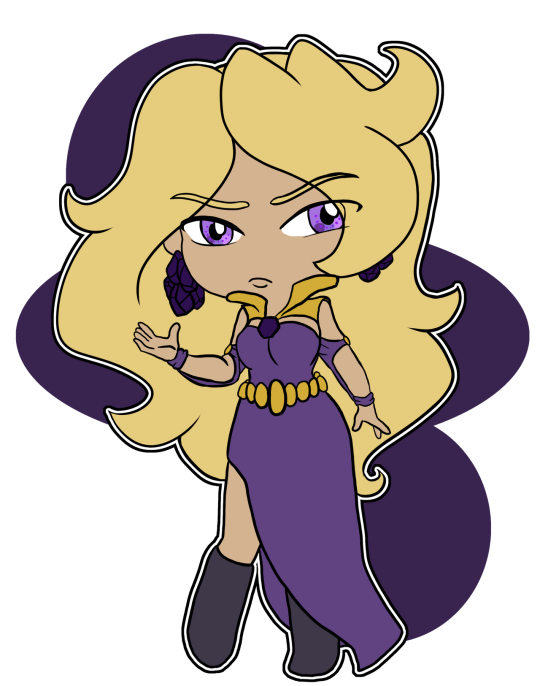




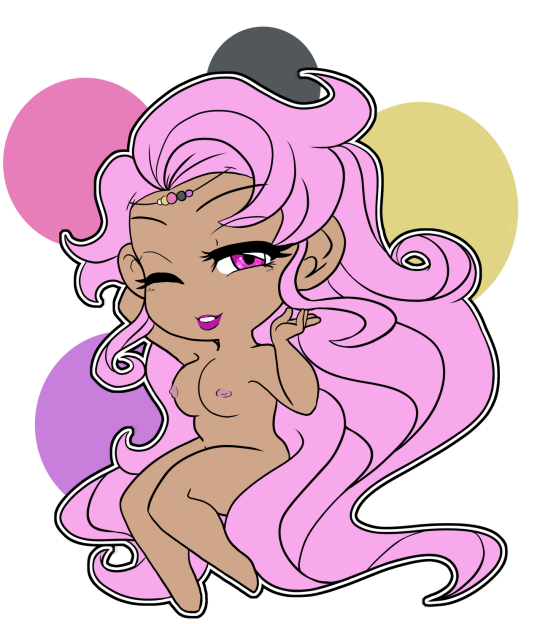
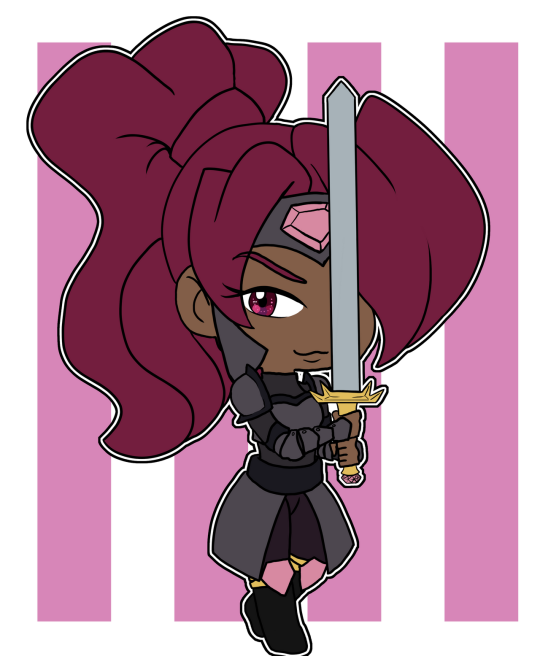
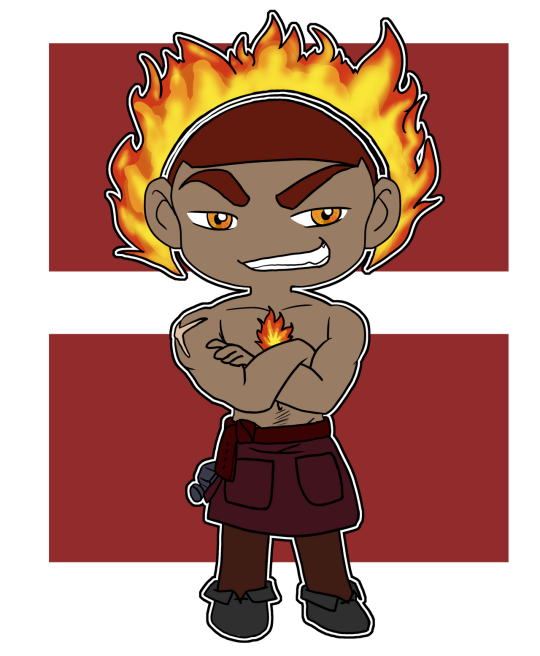


And to shamelessly plug my own story
This whole group is featured along with a lot of their world building/lore in my story Fragments of Magic: Shards of Allunatia Book 1.
#Thanks so much for sending this in!#I hope this helped!#You can learn more about the Jeweled Court in my novel: Fragments of Magic Shards of Allunatia Book 1#Available in Ebook and Paperback#On Amazon!#Pop Culture Pantheon#Make your own Pantheon#Creating your own Pantheon#Pantheon#The Jeweled Court#Long post is long
44 notes
·
View notes
Text

SOMEBODY ONCE TOLD ME-
I know it’s been a very long while since our last episode, but after dealing with other projects, along with real life getting in the way from time to time, we’re finally continuing our next part of the second road trip across the Maasrichtian. While it only has 5 segments like the last episode, and does borrow some of last season’s “Freshwater” thunder quite a bit, I still had a good time with Swamps. And the segments presented here do bring a few things to the table for PHP in general. You’ll see what I mean when we get into them.
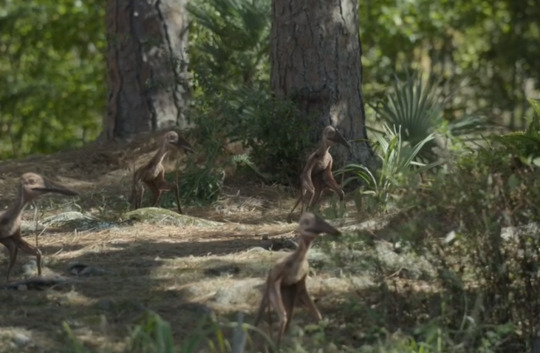
Snacks on the wing
The episode starts with the wetlands of Asia, where baby azhdarchid pterosaurs are attempting to fly for the first time. Keeping up with this show’s record of baby animals meeting their end, the pterosaurs have to deal with the threat of getting eaten by a horde of Shamosuchus. Unlike the Simosuchus from earlier in the season, these relatives to today’s crocodiles and alligators comfort more to the shape that we’re used to seeing these reptiles in. While I don’t have much to say about this segment, I find it cool how it draws comparisons with how Freshwater crocodiles hunt flying foxes in Australia. Even when millions of years apart, some hunting strategies are just that good.

Gone fishin’
The episode then cuts to the forests of South America, where the focus is on a truly unique animal; Austroraptor. For those not aware, this was a species of raptor dinosaur that was not only huge for its family (Think 20 feet long), it also lived a life of hunting fish. These of these guys like what would happen if a grizzly bear and a heron had a baby together. The plot of this segment shows a young male trying to score some lunch of his own. Many of the larger adults can only only catch garfish like it’s not their problem (which is something that our male is new to), but they can be aggressive, often attacking each other if one of them disrupts the other’s hunt. Until he learns how to catch prey successfully, the best option that the main male has to take is to snatch someone else’s prey, and try not to lose at least a few feathers in the process.
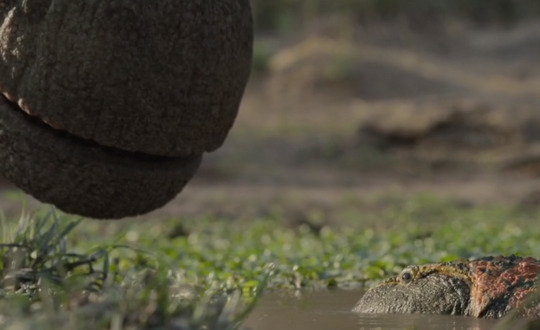
“Hippity hoppity, get off my property”
We then cut back to Madagascar to see the return of another Season 1 veteran. Y’all must’ve loved Beelzebufo so much, you all wanted to see more of the bay dinosaur-eating frog (And I really wouldn’t blame any of y’all). And fortunately, Apple heard everyone’s pleas for the devil toad to return, so here we are! The segment has a male Beelzebufo trying to find a good place to attract a mate. Unfortunately for the frog, a herd of Rapetosaurus just happened to come back and waddle in the mud, making things even harder for the Beelzebufo. That must be frustrating.
The Beelzebufo then has to find a new place to set up his courtship display, away from the titanosaurs. After a bit of hopping around, and even doing this…
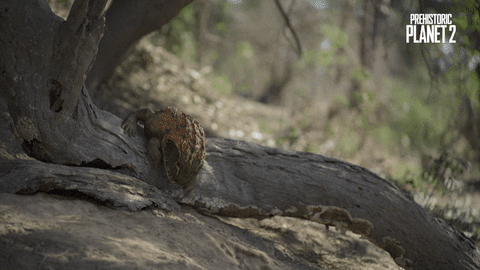
Keep on rollin’
Our champ eventually finds a good enough spot to try again, with the Rapetosaurus herd moving on. They even leave footprints in the mud that get filled with water. The only complaint that I have for this scene is the lack of the Beelzebufo raising his eventual tadpoles. The concept art for the devil toad that was made by Gaëlle Seguillon refers to it as “Beelzebufo adult”, so it could be possible that devil tadpoles were considered to be in the show. Either that, or we could see another Beelzebufo-themed segment in a possible Season 3, taking alot of inspiration from how African bullfrog males raise their young. I may or may not be planning to add that to my hypothetical Season 3 idea, so keep your eyes peeled.

Head Games
Despite the episode literally being called “Swamps”, we cut to a dusty plain in North America, where the area in question used to be a swamp that eventually dried up. It’s here where we see the second pachycephalosaur of the series in the form of Pachycephalosaurus itself. It’s no secret that the domed heads of these creatures were used for some sort of territorial display, so we see an older male fighting a younger and rowdy male, who has been causing trouble for the herd. After a long and hard duel, the old male is knocked down, and his younger rival bellows out in victory. This turns out to be a bad idea, as it gives the old male time to get back up and strike down his rival. With the battle lost, the young male is then exiled from the herd, where he has to fend for himself. I’m not gonna lie, he’s gonna need everything in his kit to survive. Y’know why?
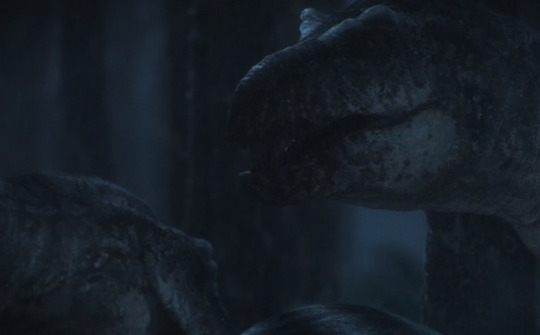
In the night, no one can hear you roar
The last segment of the episode shows us how basically terrifying T. Rex can be when hunting. After the last season shows how these giant predators can be doting parents or a loving couple, this segment serves as a reminder that this is still Tyrannosaurus Rex that we’re talking about. When night falls on the floodplains of Hell Creek, a couple of T. Rex brothers stalk around the forest, spying on a group of Edmontosaurus. The two split up, with one of them stepping on a fallen branch, intentionally causing the herd to get nervous. Thanks to their padded feet muffling any heavy footsteps that could be heard, along with their extremely good night vision, the predators spring into action. While one of them lunges for an Edmontosaurus, the latter is sent towards the other T. Rex. With both of them clamping their bone-crushing jaws into their hapless prey, the hunt is soon over, and the two get to enjoy their hard-earned meal. A funny thing to mention is how neither of the T. Rex crashed into the opening, roaring as they charged towards their prey. Large predators cannot afford to waste precious energy by running out and screaming like a mad man, so they need to be careful, often turning to ambush tactics to catch prey. If anything, this instance of averting usual pop-culture depictions of dinosaurs serves to make these beasts scarier than they already were. Unlike the mindless, perpetually roaring and shrinking movie monster that shakes the ground itself with every step, you’d never see or hear the real thing coming, until it’s too late…
youtube
This takes the phrase “Bonehead” to a new level
The Uncovered segment of the episode takes a closer look at how pachycephalosaurs like Pachycephalosaurus used their domed heads in fighting. I don’t have alot to say about this part, but I can say that headaches must be a major pain when it comes to these guys.
And with that, we only have 2 episodes left. I apologize for pumping this review out late into the month. Being busy with other projects, along with dealing with real life stuff and being a lazy ass from time to time can do that to you. Nonetheless, the next review on our list covers one of my favorite episodes in the entire series so far, so that’ll be fun when we get to it. Get ready to “dive” in again next time, because we’re gonna be soaking up the thirst of the land.
…I hope you laughed at that joke.
13 notes
·
View notes
Text
In Celebration Of Season 2....
16 notes
·
View notes
Text
Hangover Cures Korean Swear By
1. Bean Sprout Soup

Bean sprout soup was voted number one for food hangovers craved after a night of heavy drinking among office workers. Many restaurants serve this dish Jeonju style in an earthenware pot with rice. It is usually served with a side of moju which is a low alochol drink prepared by boiling makgeolli and other medicinal herbs.
2. Dried Pollack Soup
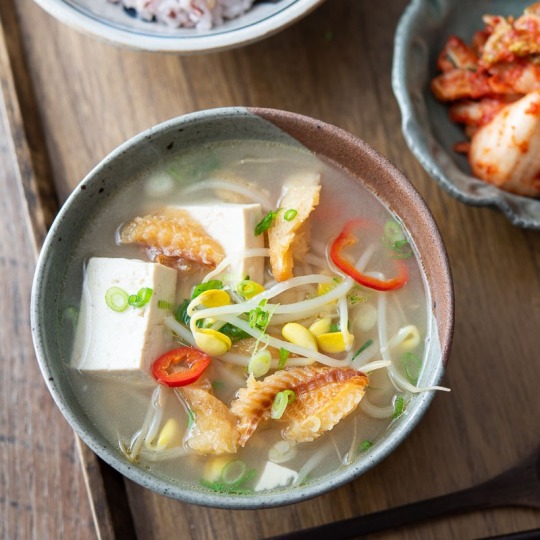
Dried pollack soup is a mildly seasoned but flavorful hangover soup. A classic dried pollack soup is usually prepared by pre-soaking shredding dried pollack. The soup is seasoned with salt and pepper. It also contains tofu cubes and silky-smooth egg ribbons.
3. Soup with Congealed Oxblood

Although the name of this soup doesn’t sound appetizing, it has a mild acquired flavor. The texture of congealed oxblood is smooth with the texture of firm pudding. The soup stock is made by boiling ox bones and is seasoned with soybean paste.
4. Pufferfish Soup

Pufferfish has to be prepared only by licensed chefs who have received intense training to eliminate the toxin from the fish. Most restaurants offer this soup in spicy and non-spicy version. Usually, the non-spicy version is preferred for those seeking to chase their hangovers. This dish is especially popular in Busan.
5. Pork Spine Soup
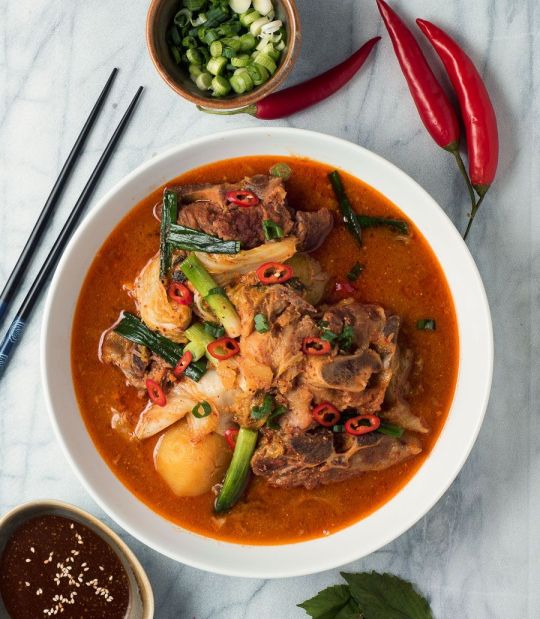
This is a rich and spicy pork soup with meaty chunks of pork spine. Another name for this dish is gamjatang. It is usually served communal style in a large pot an is dished out into individual portions in earthenware bowls to make sure its piping hot until the end of the meal. Local usually mix the rice in the broth while enjoying this dish.
6. Golden Freshwater Clam Soup

This dish is a specialty in Gyeongsangnamdo Province. It is a clear soup made by boiling golden freshwater clams and simply seasoned with salt. Alothough the clams are small in size compared to other clam species but they are just as sweet and release lots of flavors to the broth.
#Korean food#korean hangover#korean culture#korean guide#korean headers#korean edits#korean eats#korean tips#korean cuisine#korean vlog#korean blog#korean#korea food#korea guide#korea headers#korean soup#korea eats#Korea Republic#korea restaurant#korean restaurant#korea tip#korea culture#korea cuisine#korea vlog#korea blog#korea#south korea food#south korea guide#south korea headers#south korea soup
14 notes
·
View notes
Text
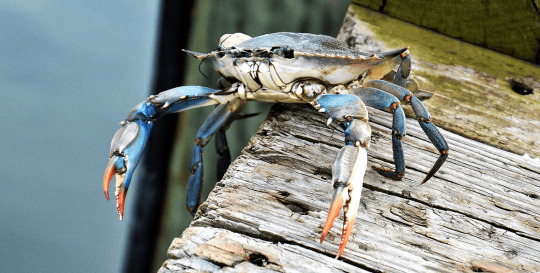


At Last, the Atlantic Blue Crab!
A common sight on dinner tables in Canada, America, and Mexico, the blue crab-- also known as the Atlantic blue crab or the Maryland Blue crab (Callinectes sapidus)-- is native to the the Gulf of Mexico and the Atlantic coast of North America. This species is a bottom dweller, and can occupy a range of habitats from freshwater tributaries to the open bays and gulfs of the ocean itself. At times it may be found at high tide, but most individuals remain submerged at depths up to 36 m (120 ft) deep.
As indicated by its name, the claws and front body of male blue crabs are bright blue. Females are carry a blue tinge, but are largely brown or olive, though the tips of their claws are bright red. Otherwise, the two sexes may be distinguished by the shape of their underside, or "apron"; males have an inverted 'T' shape, while females have a wider, rounder shape. Individuals of both sexes may grow up to 23 cm (9 in) in width, and weigh up to 136 g (0.3 lbs).
Spawning for C. sapidus can occur year-round, but for most populations it peaks in October or November. When females are ready, they travel up estuaries and rivers to where populations of males are more concentrated, and then release pheromones in their urine to attract mates. Male crabs then compete for access, and guard their chosen mates fiercely for up to a week. During this time, the female molts, at which point the male fertilizes her. Afterwards, she may retain her mate's sperm for up to a year, during which time she returns to saltier waters. A female can fertilize 2 million eggs at a time, and will carry them in a mass under her abdomen until they hatch, about a week after fertilization. She may do this as many as 4 times throughout a single mating season.
Once hatched, Atlantic blue crab larvae are released into the ocean. Each larvae spends 30-40 days going through seven larval stages known as zoea; these stages are similar to the instars of a larval insect. However, zoea have hard shells and must molt at each stage of development. After the initial zoea stages, juvenile C. sapidus enter the megalops stage, which lasts 6-20 days. During this time juveniles move from the ocean into the estuaries in which they spawned. Finally, they molt into their final form, which resembles an adult-- albeit much smaller. Both males and females continue to molt throughout the year until they reach their full size. In total, both sexes go through about 25 molts each throughout their lives, which spans about 3 years in the wild.
Blue crabs have a wide and varied diet, as they are omnivores. In their larval stages, Maryland blue crabs consume primarily plankton and detritus. Megalops and adults will feed on clams, mussels, and oysters, small fish, kelp, seaweed, carrion, smaller blue crabs, and animal waste. In turn, both juveniles and adults are food for eels, large fish some sharks, stingrays, and humans. In fact, predation upon larval and sub-adult blue crabs is so heavy that, of 8 million eggs released by the mother, only 1 or 2 typically survive to adulthood.
Conservation status: The Maryland blue crab has not been evaluated by the IUCN. However, in recent decades, fisheries have noticed a severe decline in abundance, likely due to over-harvesting and pollution.
If you send me proof that you’ve made a donation to UNRWA or another fund benefiting Palestinians– including esim donations and verified gofundmes– I’ll make art of any animal of your choosing.
Photos
Kim Cover
Lynn Strauss
Jo O'Keefe
#atlantic blue crab#Decapoda#Portunidae#swimming crabs#crabs#decapods#crustaceans#arthropods#marine fauna#marine arthropods#coasts#coastal arthropods#atlantic ocean
92 notes
·
View notes
Text
Ranking the girlies wings up to Harmonix: 🌊 Aisha 🌊
1) Enchantix
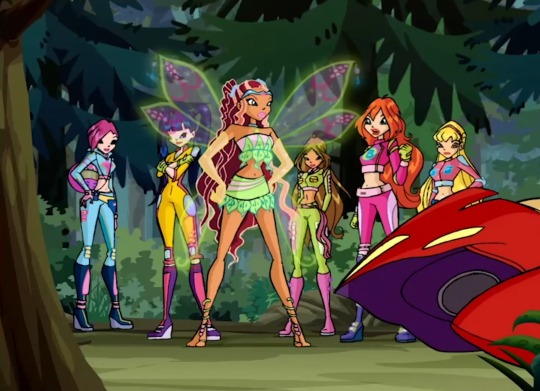
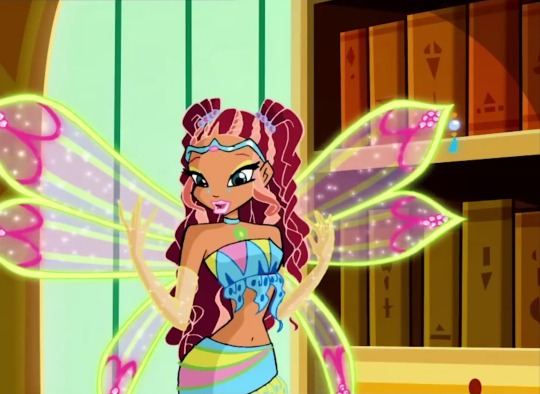
Oh my god I love these so much. If you asked me to pick between Aisha, Tecna, and Bloom's Enchantix wings I'd actually fight you, but I do own a necklace of Aisha's Enchantix wings so?? They're gorgeous and I love them, is what I'm saying
It's really hard to make green and pink work together, especially to my admittedly sensitive eyes, but it looks so good. They look so good. Instead of trying to make the pink and green blend with each other harmoniously, and just hoping it doesn't contrast too much, it leans into the contrasting nature of pink and green making her wings fucking pop! And drawing your eyes to them!! So pretty!!
2) Magic Winx
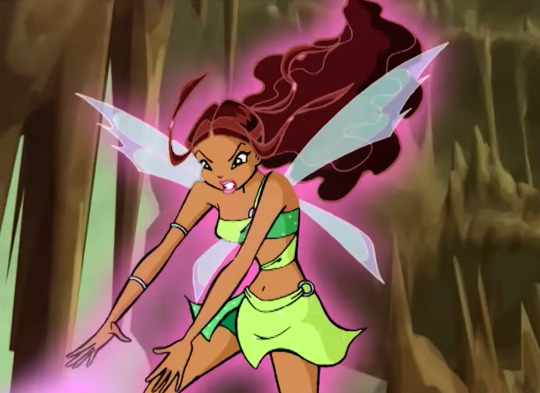
Ah yes, the best of the classic magic winx wings. These babies FUCK. They look like freshwater insect wings to me, which adds to the enegry. The pointy-ness really fits with Aisha's early season enegry. I love these sm
3) Harmonix
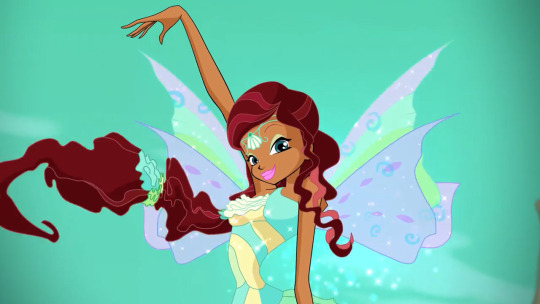
These wings remind me of a amphibian....That's a compliment ndjjsd. They look like they'd be attached to a water based transformation and they are!! Like I said, the best Harmonix wings. They understood the assignment. I especially like the dash lines on her wings, they're very pretty
4) Believix

I really really like the fact that they're shaped like crescent moons! Aisha is the fairy of liquids, and the moon pushes and pulls the ocean which is the biggest body of liquid so obvious the moon would come up in her powers just a little (I need a Aisha and Stella moon powers convergence NOW) so the slight refrence in the shape of the wings it really cool. Despite this the wings look really odd to me. I really appreciate these Believix wings for their shape, but they're shape is aslo why they're lower than Harmonix. Double edged sword. I'm sure this could of been done better, it's good now, but it's a little middling
5) Sophix
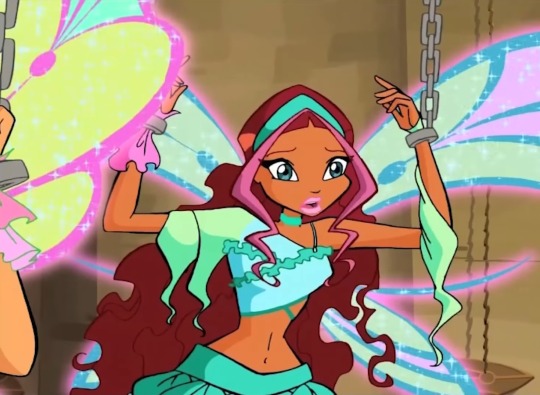
Look!! At!! Her!! Stingers!! I know they're not stingers but the pointy part of her wings right there are really really fun and I like them a lot. I wish that was on her Believix wings
6) Lovix
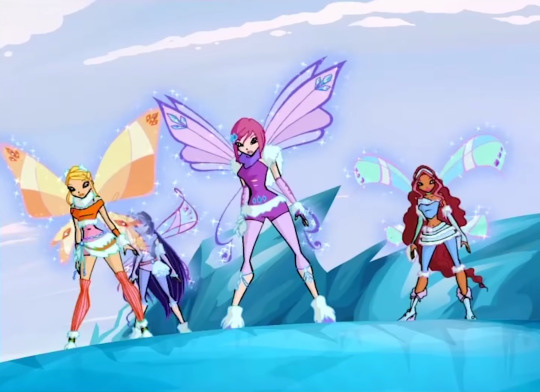
Not that Aisha can't do pastels but she looks much much better in bold colors. That combined with the under designed Lovix wings makes this one just uninteresting and underwhelming
60 notes
·
View notes
Note
for Va'pak; Uzhau,
how did you get the idea for it? like it's so well thought out, in the writing style, and it feels so intelligently written, and you come out with an update pretty quick, for a fic like this. i just wanna know, like, what do you think when you're writing? oh yeah and it's a bloody fantastic fic btw
Two ideas started this fanfic:
Vulcans require mental bonds. Being without them is like sensory deprivation. Any surviving orphans would be at massively high risk for self harm or other mental health issues.
Spock and Jim in Iowa. (All elaboration redacted for spoilers.)
I wrote chapter 5 first. It built from there. My fix-it for the odd characterization choices in ST09 with Jim being a felon got added. The Vran from my other story gets a cameo. I like worldbuilding so mostly my stories build up either from "How do I explain [canon thing] and how does that explanation effect other stuff?" Example: Season 1 of TOS says Vulcan has very little free sodium salt, with what a human would consider "freshwater" oceans even if the evaporation rate would make it very mineral rich/hard water. The fannon about Vulcan food being bland to humans would therefore be because there is no salt in the seasoning, meanwhile Vulcans think human food is way too salty! Both species agree on sweets, with strawberries and cream on toast with nuts being a canon Vulcan breakfast served family style!
The other way I worldbuild is more "out of whole cloth, but color-matched to canon." My Jotenheim story is mostly this. I look at the overall framing and details and extrapolate, then build on that extrapolation until I have a complete living culture. Spock has a statue of a death god in a little meditation area of his room. Even as XO, the cabin space on a ship is at a premium. He loses almost all his storage space in the living area to have this instead. It is no great leap to say it is wildly important to him that he have this connection to his culture and religion. That alter means that much to him. Oh, he's wild, out of pocket, sassy, and indulgent at times, but he says his prayers and observes the holy days like a good boy when he's done. At least for his family, we can be sure this is a huge part of their lives... but what is that religion like? What does it say? What can I reverse engineer from canon and what can I make up to fill the voids? Then: how does that impact the story.
As for update speed and quality? Behold:

Never post the last thing you have written unless it is the end. Always have at least one more drafted and some kind of outline or plan before publishing fanfic. I use Scrivener so I have a place for a synopsis for each of these "pages" and you know what? Some of them move. I've taken 5k words and shuffled them like a deck of cards in some of my drafts because after writing it all I realized the story would work better otherwise than how it was.
My first drafts are quite rough, messy grammar and dialog that perfectly fits the "he wouldn't say that" meme.
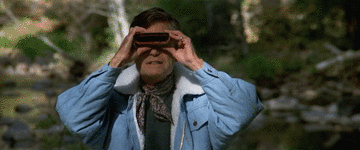
I just keep on working it until it works out. I've been writing fanfiction since the late 1990's, and I do my best not to rush it.
15 notes
·
View notes